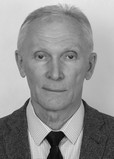Age-specific external respiratory function progress in cross-country skier’s onthogenesis
Фотографии:
ˑ:
PhD A.I. Golovachev1
Dr.Biol., PhD B.A. Dyshko2
PhD S.V. Shirokova3
1All-Russian Scientific Research Institute of Physical Culture and Sports, Moscow
2LLC "Sport Technology" Sports Engineering Association, Moscow
3Moscow Secondary Special School of Olympic Reserve No. 2 Moscow City Department for the Physical Culture and Sport, Moscow
The study analyzes the age-specific maximal lung ventilation (MLV) and oxygen consumption (OC) indices identified by the exhale volume and content (oxygen to carbon dioxide ratios), respectively; that are indicative of the muscular work intensity. Sampled for the study were 11-28 year-old male cross-country skiers (n= 696) with sport records of 3-20 years, with the skills ranging from the beginner level to the World Class Master of Sport. The sample was tested by Quinton (US-made) submaximal treadmill exercise, with the run speed varying from 2.0 m/s (7.2 km/h) to 3.0 m/s (10.8 km/h) depending on the age and skill level; with the treadmill floor fixed at 1º; and the speed stepped up by 0.5 m/s (1.8 km/h) every 3 min.
The study data and analyses showed that progress of the external respiration functionality is most intensive in the periods of 11-12 and 19-22 years of age, as verified by the definitive maximal lung ventilation and oxygen consumption indices, with the peak levels reached by 25-28 years of age. The age-specific variations of the functionality rates are interpreted as due to a variety of endogenous and exogenous factors of the external respiratory function onthogenesis and competitive loads, with the leading role of the endurance progress indices.
Keywords: sport onthogenesis, age-specific variations, growth process rate, external respiration rates, maximal lung ventilation, oxygen consumption index, cross-country skiers.
References
- Volkov N.I., Oleinikov V.I. Bioenergetika sporta [Sports bioenergy]. Moscow: Sovetskiy sport publ., 2011, 159 p.: il.
- Golovachev A.I., Butulov E.L., Bogdanov P.B. et al, Neverkovich S.D. [ed.] Eksperimentalnoe obosnovanie metodiki dozirovaniya fizicheskikh nagruzok v testakh stupenchato vozrastayuschego kharaktera [Experimental substantiation of method of dosing physical loads in step tests]. Nauchnye trudy 1997 goda. VNIIFK publ., Moscow, 1998, pp. 46-67.
- Golovachev A.I., Kuznetsov V.K., Chulkov S.A., Shirokova S.V. Issledovanie osobennostey funktsionirovaniya sistem energoobespecheniya yunykh lyzhnikov-gonschikov v usloviyakh vypolneniya predelnykh myshechnykh nagruzok razlichnoy dlitelnosti [Study of specifics of functioning of power supply systems for junior cross-country skiers under submaximal muscular loads of various duration]. Vestnik sportivnoy nauki, 2006, no. 4, pp. 24-27.
- Mishchenko V.S. Funktsionalnye vozmozhnosti sportsmenov [Athletes' functional capabilities]. Kiev: Zdorov'ya publ., 1990, 200 p.
- Cross country skiing: handbook of sports medicine and science. ed. by H. Rusko. Blackwell Science Ltd., Osney Mead, Oxford, UK, 2003, P. 208.
- Sandbakk O., Holmberg H.-C., Leirdal S., Ettema G. The physiology of world-class sprint skiers. Scandinavian Journal of Medicine and Science in Sports, 2011, vol. 21, no. 6, pp. 9-19.
- Wilmore J.H., Costill D.L. Physiology of sport and exercise. Champaign Illinois: Human Kinetics, 2004, 726 p.



 Журнал "THEORY AND PRACTICE
Журнал "THEORY AND PRACTICE